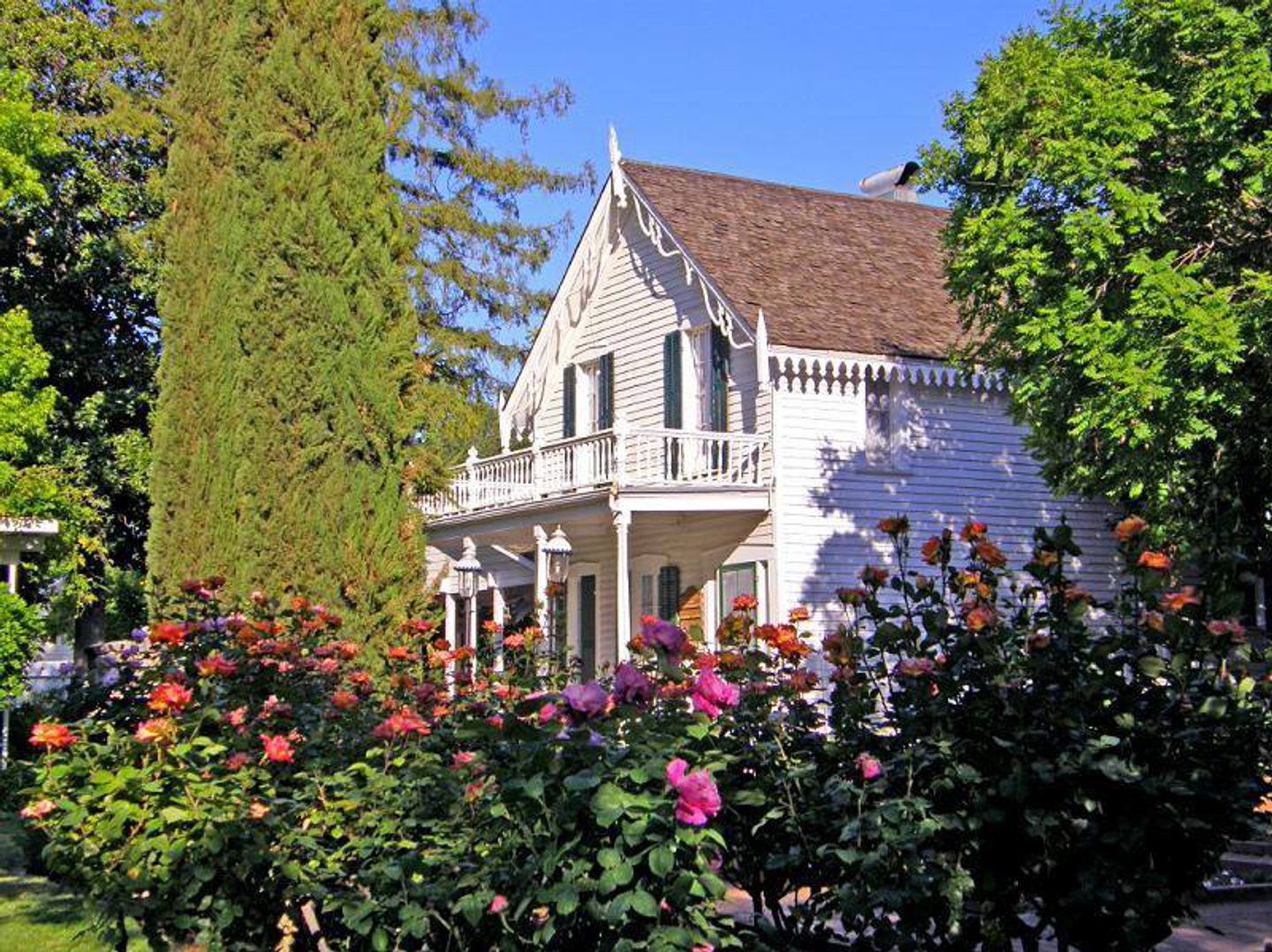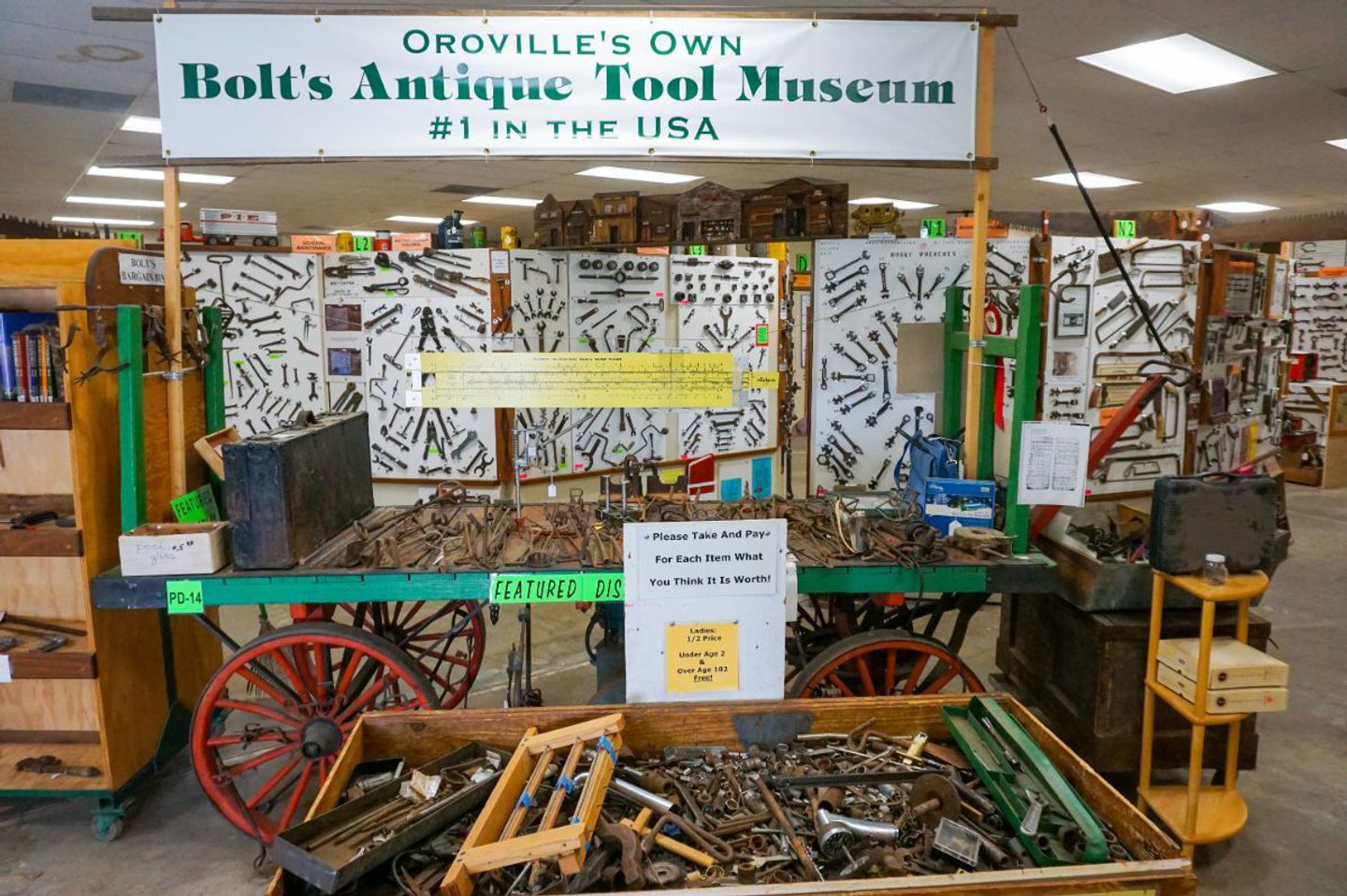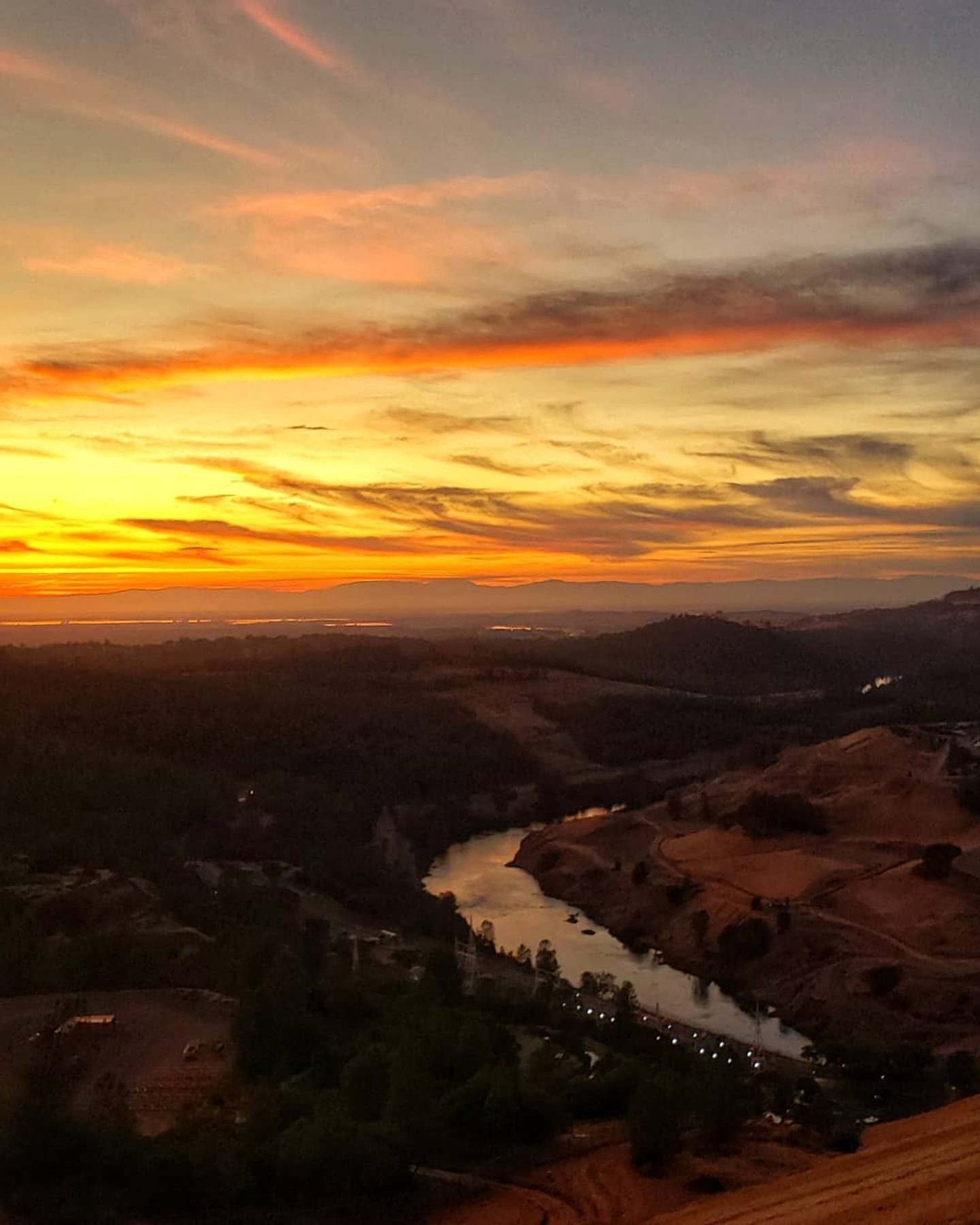Spanning nearly 15 miles from the Feather River to the Oroville Dam, Oroville’s Greenline Tour offers a scenic driving tour of the city. Just follow the painted green line and posted signs to some of the city’s most popular and historical attractions — you don’t even have to get out of your car! (But it’s that much better if you do!)
Where the River Bends
The Greenline Tour starts at the Feather River, which features prominently in Oroville’s history and continues to delight locals and visitors today. Spend some time at two popular riverside parks before continuing the driving tour.
Stop 1: Riverbend Park
Situated on 210 acres right next to the Feather River, the beautiful Riverbend Park features sports fields, trails along the river, a boat launch, playground, two 18-hole disc golf courses, and more.
If you have some time for a longer stop and really want to stretch your legs, enjoy the walk along the Feather River Trail, which will take you past Bedrock Park (Stop 2) and all the way to the Greenline Bridge (a later stop along the Greenline).
Otherwise, hop back into the car and continue the tour.

Historic Downtown
With more museums per capita than Sacramento, Oroville is a surprising under-the-radar museum destination. History buffs in particular will find Oroville a worthwhile destination with its history-focused museums, all of which are just a few blocks from each other. Continue your driving tour, or park to enjoy a historical walking tour of these nearby attractions.
Stop 3: C.F. Lott Home
The historic C.F. Lott Home is a Victorian revival-style structure built in 1856 by “Judge” Lott, a gold-rush pioneer who helped form California’s government. A tour of the house — brought to life by docents clad in period costumes — reveals stories of the Lott family and their importance to early California as well as the love story between Lott’s daughter, Cornelia, and Jesse Sank. Their love lives on with the home’s location in Sank Park, which contains a beautiful garden and gazebo, perfect for a leisurely stroll.

Stop 4: Oroville Chinese Temple
For a different perspective on California pioneer history, head to the Oroville Chinese Temple. This now-California landmark was built in 1863 to serve the largest community of Chinese north of Sacramento and highlights this group’s contribution to the area. The city-owned museum also has an extensive tapestry display, a collection of Chinese and American costumes, and more.

Stop 5: Bolt’s Antique Tool Museum
An exploration of Oroville’s museums wouldn’t be complete without the one-of-a-kind Bolt’s Antique Tool Museum. With over 12,000 hand tools on display, it’s the only known museum of its kind in the world. Don’t hesitate to chat with its City of Oroville museum docents, who will tell you more than you ever needed to know about the collection!

Stop 6: Centennial Plaza
Built in honor of the City of Oroville’s 100th year anniversary, Centennial Plaza along Arlin Rhine Memorial Drive offers a commanding view of the Feather River. An ideal place to stretch your legs, enjoy a picnic, take some photos, and take in the serene beauty that the Feather River has to offer.

Stop 7: Chamber of Commerce
Looking for a physical map of the Greenline Tour or more information on any of its attractions while you’re out? Pop into the Oroville Area Chamber of Commerce for visitor guides, rack cards, brochures, and more.
Stop 8: Ehmann Home
Operated by the Butte County Historical Society (BCSH), the Ehmann Home showcases Oroville’s role in the ripe olive industry at “the house that olives built.” Freda Ehmann perfected a curing process for ripe olives at the turn of the 20th century, which in turn launched California’s olive industry. Her 1911 home stands testament to her and the industry she helped shape. (Add a bonus stop to the tour with a detour to the BCSH Museum to learn about Butte County’s history from the early mining days to present time.)
Stop 9: Oroville State Theater
The historic Oroville State Theater has its own rich history worth discovering. Constructed in 1927 from a design by renowned architect Timothy Pfluger, the State Theater has been undergoing renovations by the State Theater Arts Guild (STAGE), the non-profit that owns the theater, to return it to its 1920s glory. The renovations include paint restorations, installation of a modern-yet-vintage marquee, and restorations to an authentic Wurlitzer pipe organ. Enjoy a quick stop to snap a selfie in front of the beautiful marquee or come back in the evening to catch a show in the heart of Downtown Oroville.

Stop 10: Pioneer History Museum
A trip to the Pioneer History Museum, managed by the City of Oroville and housed in an oversized replica of a 49er’s cabin, feels like a step back into the Gold Rush era. While it doesn’t look like it from the outside, 6,000 square feet of historic treasures from the mid-1800s to the 1920s await visitors. From the original Oregon City School organ and a doll from the Donner Party to Indian artifacts and displays on the pioneer families who founded the museum, a visit paints a vivid picture of the lives of early California settlers.

Greenline Bridge
Spanning the Feather River, the Greenline Bridge, right next to the historic old Table Mountain Bridge, features something special on both sides of the river. Stay on the Downtown side to explore the Feather River Nature Center or make the brief drive (or walk) across to learn more about salmon at the Feather River Fish Hatchery.
Stop 11: Feather River Nature Center
Outdoor enthusiasts will also find museums to enjoy. The city-managed Feather River Nature Center sits right on the Feather River at the former site of a Maidu fishing village. The Bath House, which provided showers and restroom facilities for the swimmers and sunbathers in the 1930s, today provides nature education programming and exhibits portraying local wildlife, while the Nature Center grounds are home to various native plants, trees and animals.

Stop 12: Feather River Fish Hatchery
Just across the river from the Nature Center is the Feather River Fish Hatchery. This is where the Department of Water Resources raises Chinook salmon and steelhead, helping them finish their spawning journeys. It’s also the place where you can get up-close and personal with those migrating fish through underwater viewing windows. Enjoy a short stop to the window and diversion dam or make time for a longer self-guided tour.

The Lake
A tour of Oroville wouldn’t be complete without a trip to Lake Oroville, home to the final two stops on the Greenline.
Stop 13: Oroville Dam
While you can appreciate the size of the Oroville Dam—the tallest dam in the county creating the second largest reservoir, by volume, in California — from afar, standing on top of it brings its massive scale into clearer focus. Drive across to enjoy a picnic at a day-use area or park along its south side to walk across or up to the nearby Overlook area for a more expansive view.

Stop 14: Lake Oroville Visitor Center
Your Greenline Tour ends at Lake Oroville Visitor Center, located high above Lake Oroville. The visitor center overlooks both the lake and the dam and features interpretive displays, an audio-video room, and more. Perhaps most fun is its 47-foot viewing tower, where you can take in 360-degree views of the lake and dam through high-powered telescopes.

More to Explore
Whether you discover all the historic and natural attractions along the Greenline in one go or meander your way through the city, there’s still more to discover in Oroville. Complete your trip with a meal or two at one of the city’s delicious restaurants, a visit to one of its unique stores and boutiques, and explore more of its outdoor offerings.

